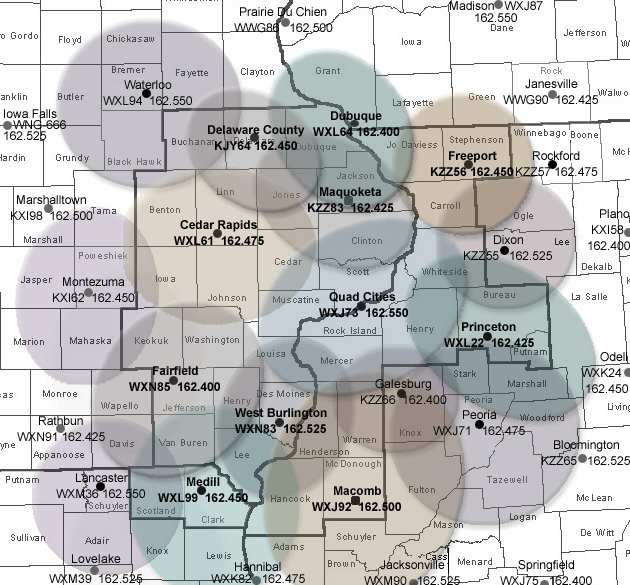 |
Local Area Stations:
|
||
|
|
|||
| Tone Alert Tests | |||
|
|||
| FIPS Codes for S.A.M.E. Radios | |||
|
|||
| The Voice of the National Weather Service | |||
|
|
|||
| History of NOAA Weather Radio | |||
|
NOAA Weather Radio broadcasts began in the 1950s when the old Weather Bureau started broadcasting aviation weather on two stations. In the 1960s, stations were added for the marine community, and by the late 1970s, the system included more than 300 stations. Partially driven by the Super Outbreak of April 1974, a January 1975 White House policy statement designated NOAA Weather Radio as the sole government-operated radio system to provide direct warnings into private homes for both natural disasters and nuclear attack. Now more than 1025 transmitters provide coverage to most of the Nation's population. Partnerships between the National Weather Service, the Federal Emergency Management Agency and the FCC, private industry and state and local governments have expanded NOAA Weather Radio into an "all-hazards" network. All-hazards broadcasts air warning information on earthquakes, volcano activity, and other natural and man-made hazardous conditions (such as a HAZMAT spill), and are used for communicating relief information after such disasters. |
|||
| Related Links | |||
|
Local Weather Radio Fact Sheets(each around 115kb pdf ) |
||
| Ask our NOAA Weather Radio Focal Point... | |||
|
|
|||